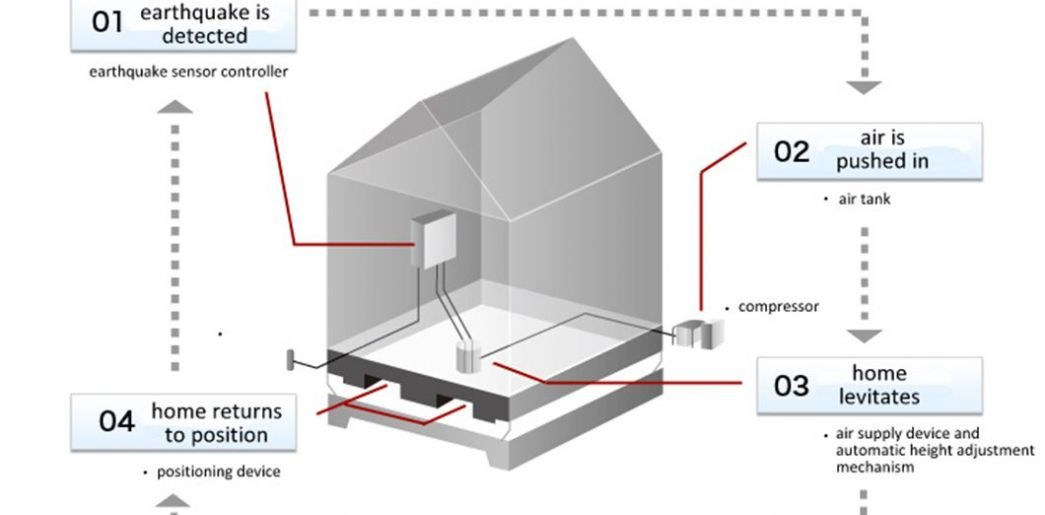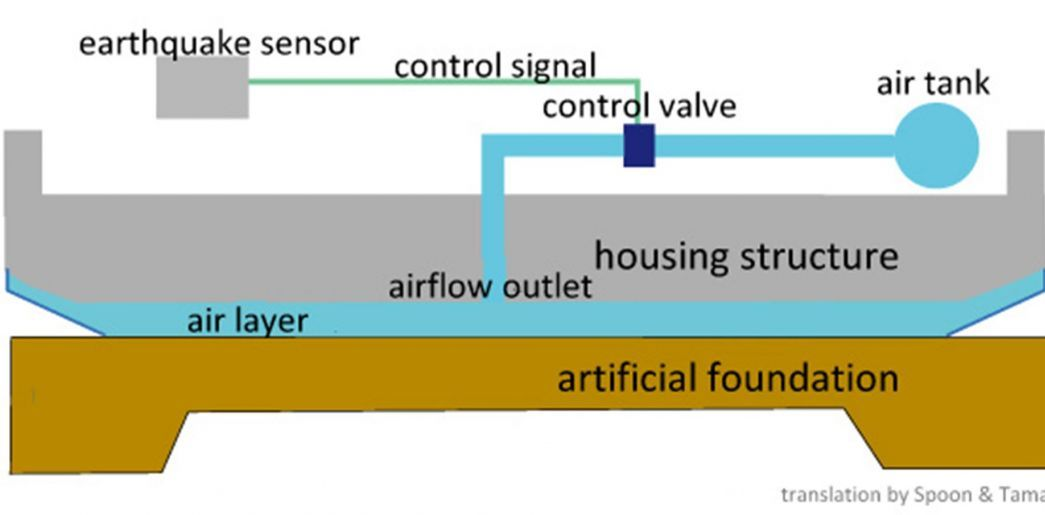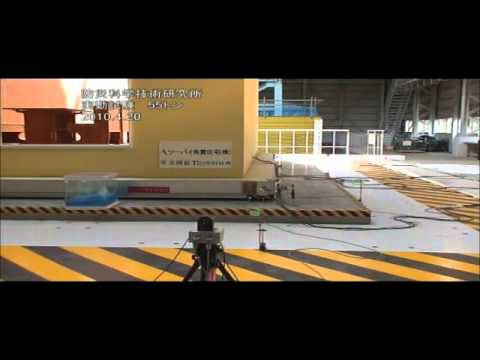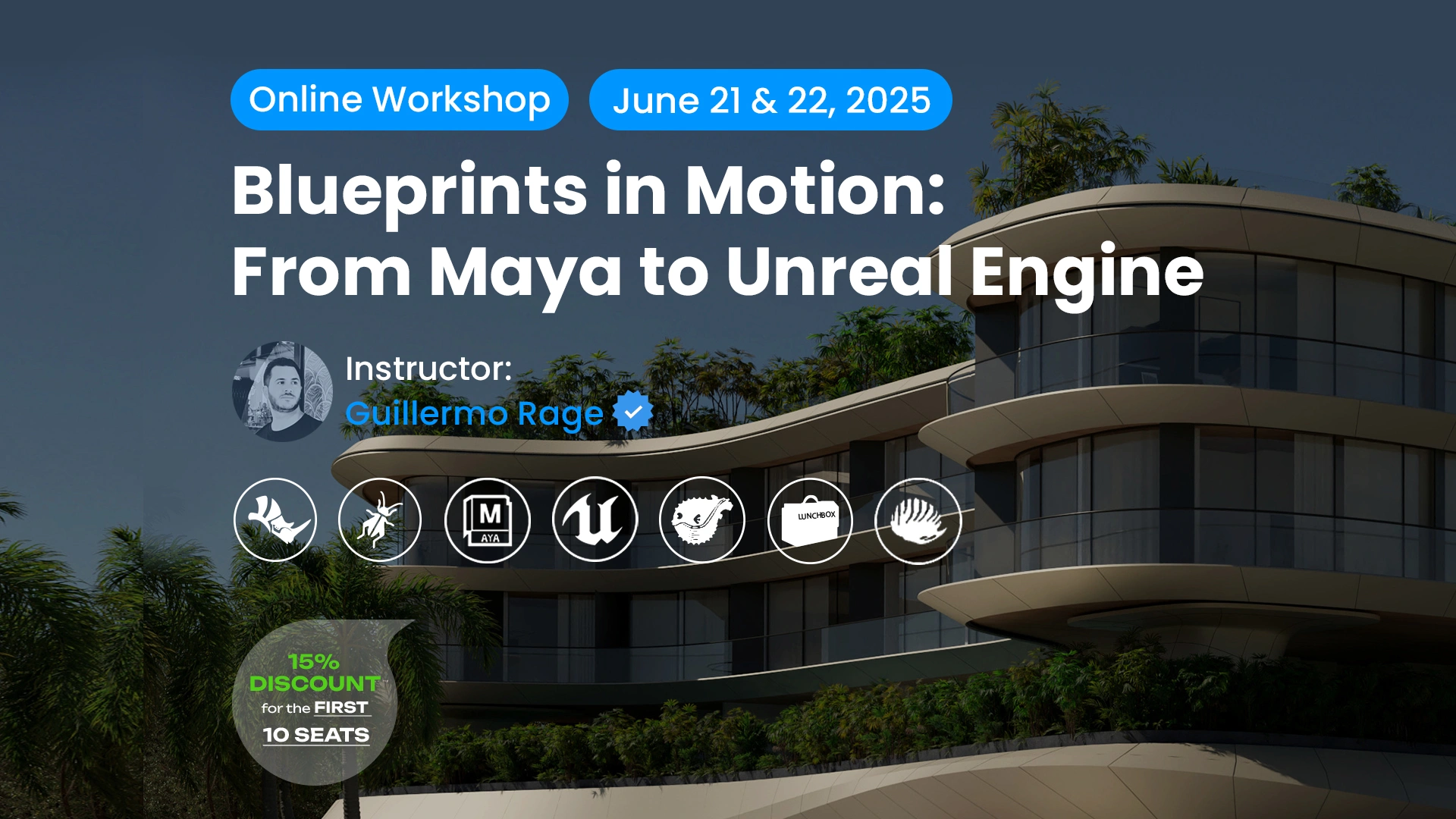In a country where earthquakes are a constant part of life, Japan has long been at the forefront of seismic innovation. Now, a Japanese company is taking a revolutionary, and literally uplifting, approach to earthquake safety. Air Danshin Systems Inc., founded by inventor Shoichi Sakamoto, has created a seismic isolation technology that levitates houses during earthquakes, allowing them to hover briefly above the chaos until the tremors subside.
At first glance, it sounds like something out of science fiction: a house that rises into the air to escape the shaking ground. But the concept is remarkably simple. The house is built atop a special air chamber system that remains dormant until a quake hits. When seismic sensors detect movement, compressed air is released into the chamber, lifting the house up to 3 centimeters, just enough to prevent the structure from shaking violently with the earth below. Once the quake ends, the system gently lowers the house back into place.

Sakamoto’s invention isn’t just theoretical. As of today, nearly 90 homes and buildings across Japan are already equipped with the system. It operates within 0.5 to 1 second of seismic detection, providing a rapid response that aims to protect structures, and more importantly, lives, before significant damage occurs. The system is backed by emergency battery packs, ensuring it remains functional even in the event of a power outage, which often accompanies major earthquakes.

What makes the Air Danshin system especially appealing is its affordability. At roughly one-third the cost of traditional seismic isolation systems, it offers a cost-effective option for homeowners, small businesses, and institutions looking for an extra layer of protection. The company has even developed scaled-up versions for use in factories and laboratories, expanding the technology’s potential applications.
To demonstrate its effectiveness, Air Danshin staged a live test. Engineers and safety professionals gathered to witness a full-sized house, furnished with tables, chairs, shelves, and even wine glasses, undergo a simulated earthquake. As the artificial tremors hit, the structure gently lifted and hovered. The house remained perfectly still, and not a single glass tipped over.
Despite the promising results and growing adoption, some experts remain cautiously optimistic. Deke Smith, Executive Director of the Building Seismic Safety Council and the buildingSMART alliance in Washington, D.C., praised the concept but raised questions about its limitations. He pointed out that while the system might work well for smaller quakes or those with lateral motion, large-scale, multi-directional quakes might challenge its capabilities. There’s also concern that if the initial quake causes damage before the airlift is triggered, the system might not deploy as intended.
Still, in a nation that has weathered devastating seismic events, from the Great Kanto Earthquake to the 2011 Tohoku disaster, the innovation is a compelling step toward safer living. It reframes the narrative of earthquake resilience not as a passive resistance, but as a dynamic response.
For now, Sakamoto and Air Danshin are focusing on refining the design, with only ten units currently being hand-assembled along Japan’s Coffs Coast. An Indiegogo crowdfunding campaign has also been launched to support broader production and eventual global distribution.



















Leave a comment